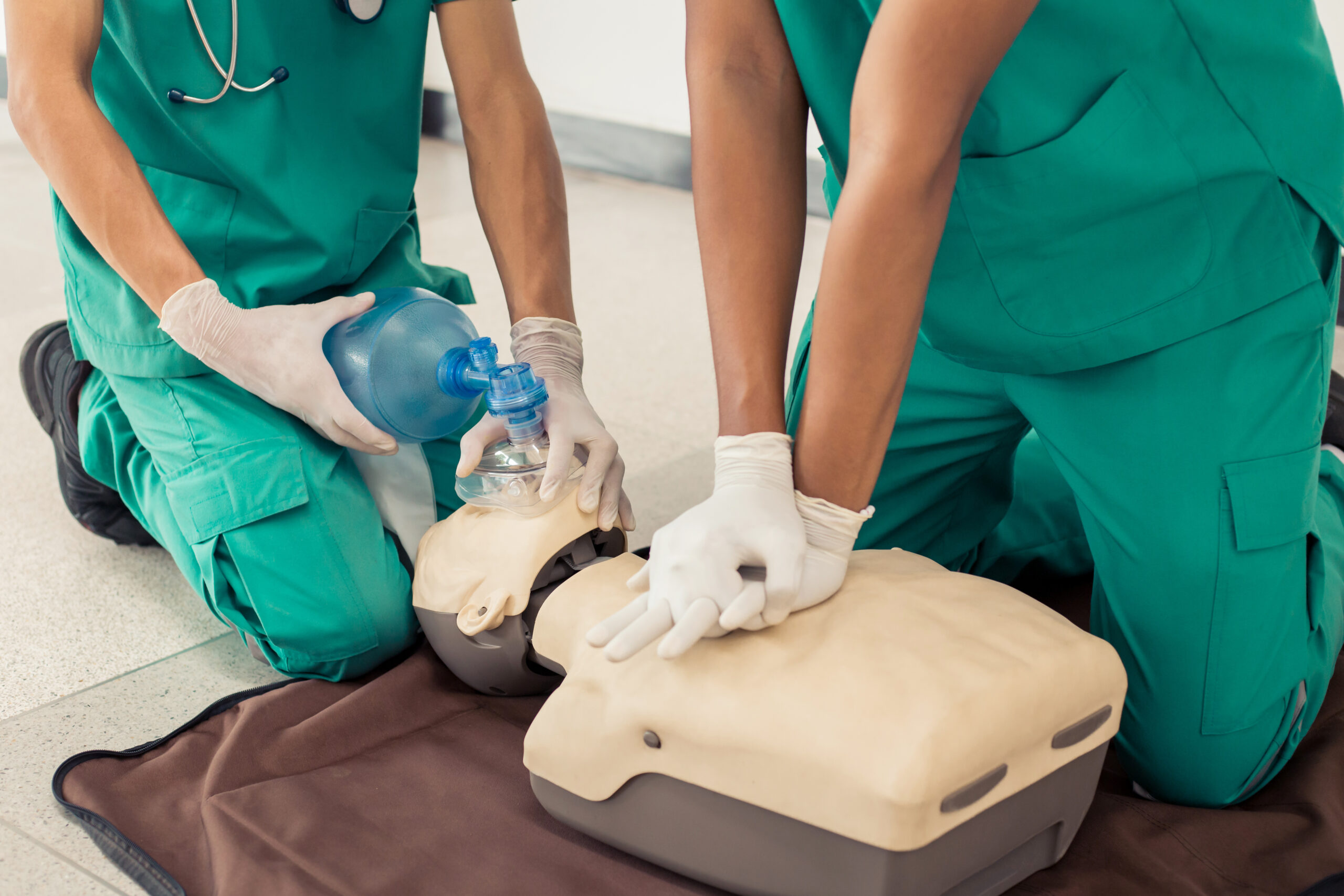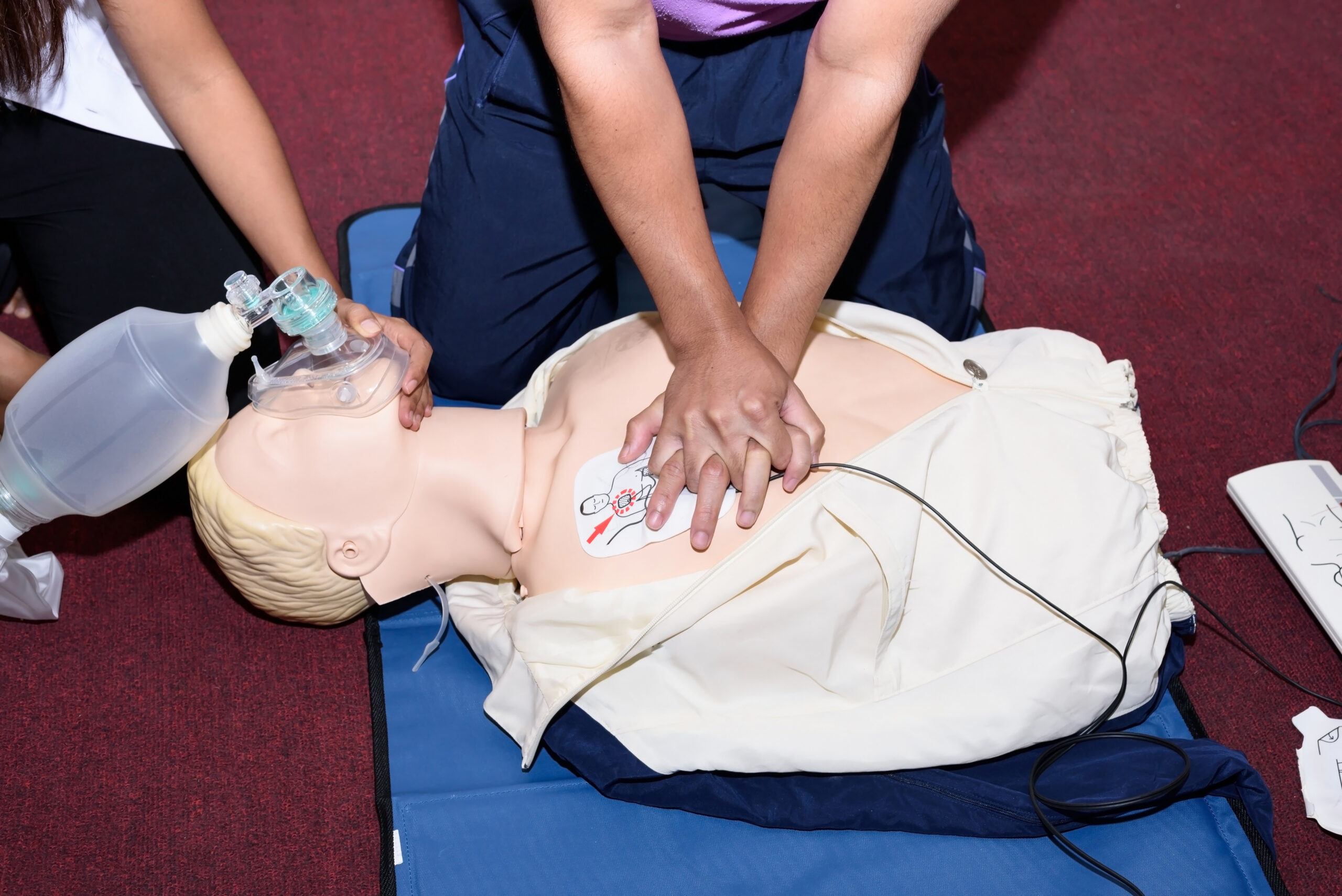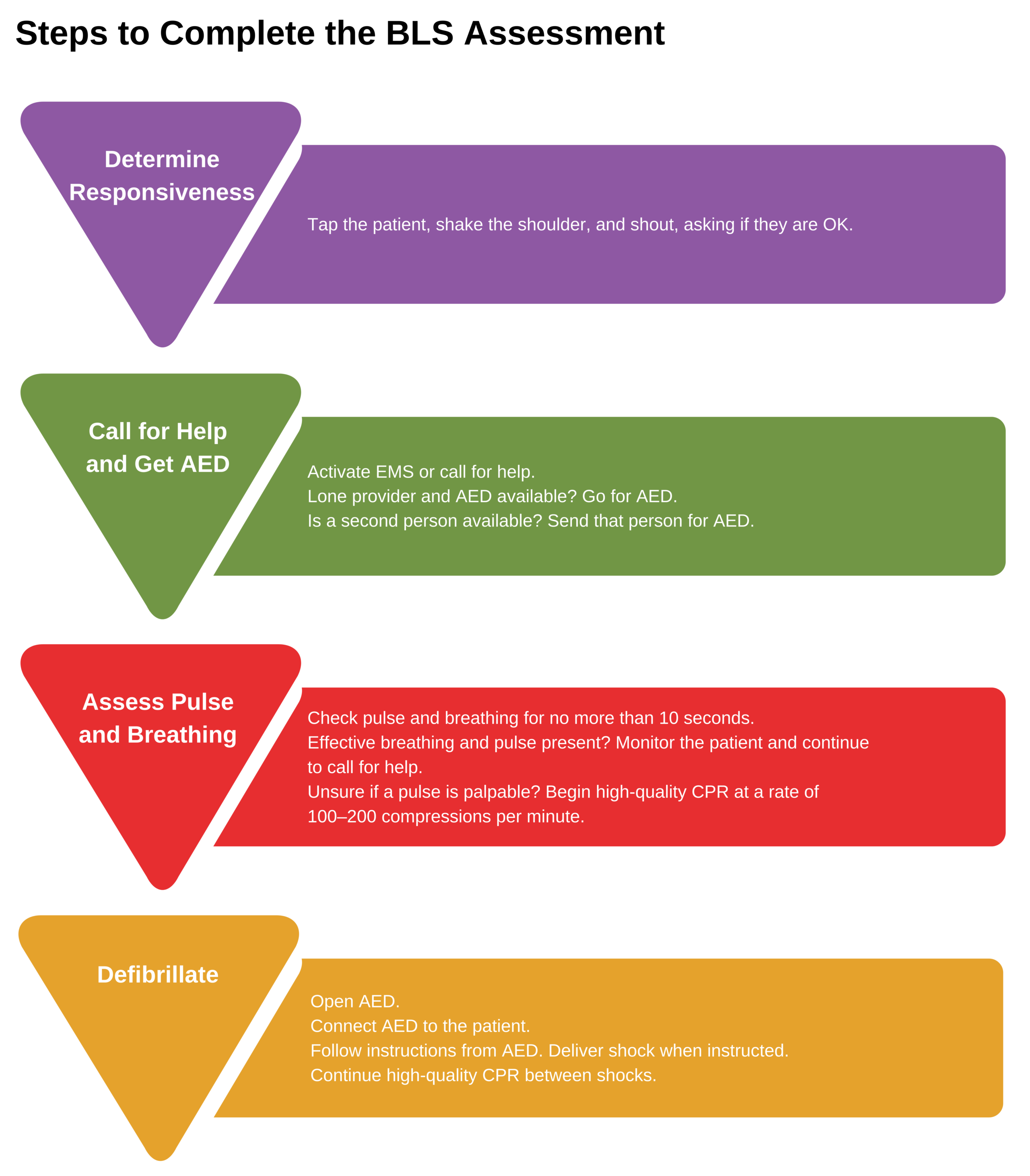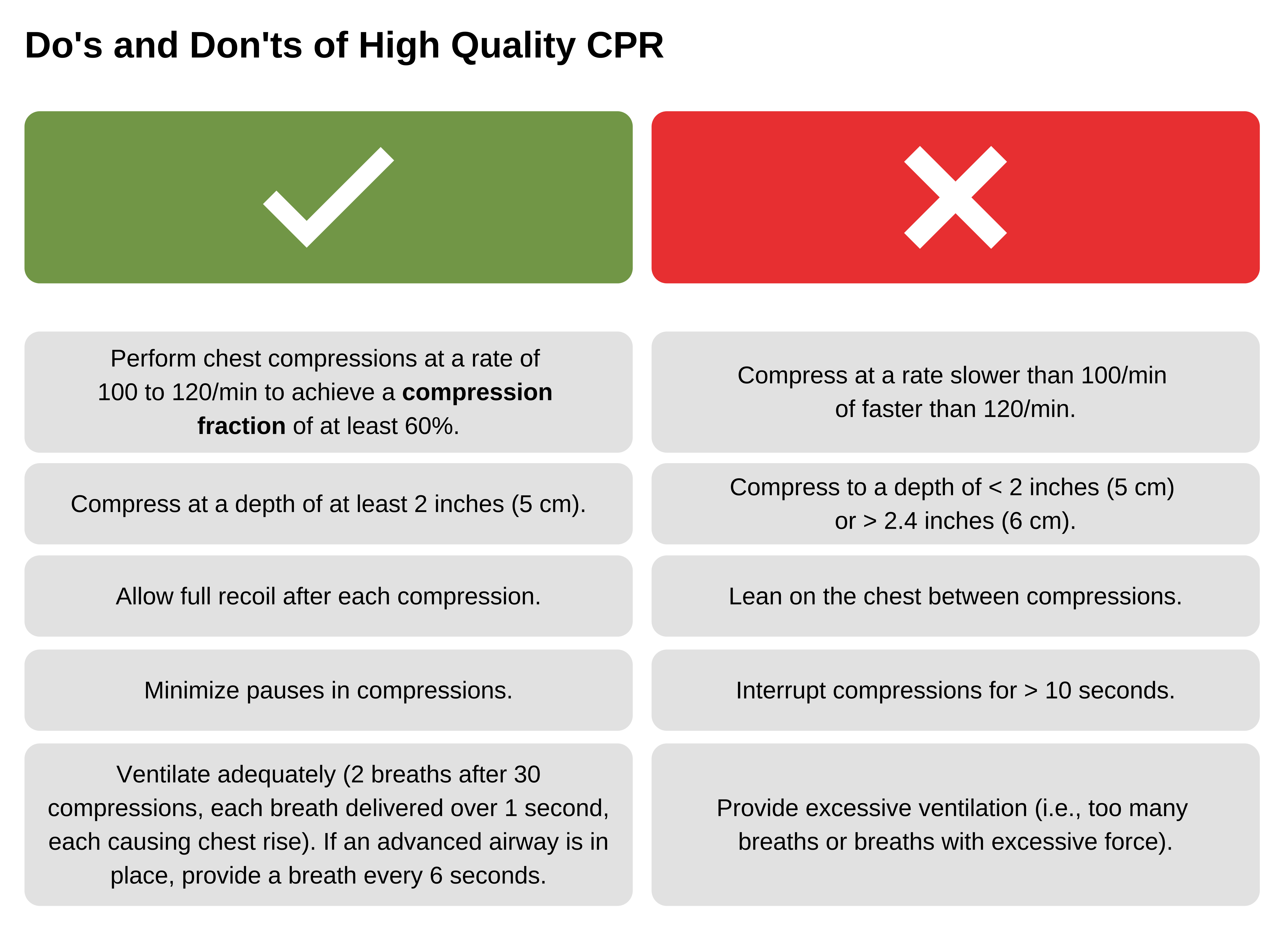The BLS Assessment
The basic life support (BLS) assessment is the first evaluation of any patient with possible respiratory or cardiac failure. This assessment emphasizes early CPR and defibrillation.
The goal of trained responders during a BLS assessment is to diagnose cardiac and respiratory arrest. Early diagnosis leads to more timely interventions to revive the patient’s ventilation, circulation, and tissue oxygenation and preserve good neurologic outcomes.
The three types of rescuer CPR protocols are based on each rescuer’s level of training and the situation in which a cardiac arrest has occurred. These include the following:
- Compression-only [hands-only] CPR
- Conventional CPR with rescue breaths
- Conventional CPR with AED use

Compression-only CPR.
Related Video: Steps of Hands Only CPR Explained

Conventional CPR with rescue breaths.

Conventional CPR with AED use.
Advanced equipment is not required to perform BLS. Immediately after a sudden cardiac arrest, oxygen content from arterial blood is still significantly adequate. Because of this phenomenon, the use of compression-only CPR and passive oxygen insufflation when available is a viable option.
However, it is helpful if the following are present:
- bag-mask
- oral airway
- automated external defibrillator (AED)
The following are the steps to complete the BLS assessment:

BLS Assessment Steps
Related Video: Understanding a BLS Assessment
The rescuer must determine what actions to take depending on the patient’s condition.
Pulse Present, Normal Breathing
When assessing an unresponsive patient with suspected cardiac arrest, if there is a pulse and the patient is breathing, the rescuer must first activate EMS. The rescuer gives pertinent information to the dispatcher so that EMS can prepare an appropriate response.
Pulse Present, No Normal Breathing or Gasping
This scenario, in adults, usually involves respiratory arrest induced by opioid toxicity, a growing epidemic in the United States secondary to drug abuse. In 2014, the Food and Drug Administration (FDA) approved the naloxone autoinjector, an antidote for opioid overdose, for use by lay rescuers. Hence, the AHA and ILCOR sought to incorporate naloxone autoinjector into the BLS sequence.
Rescuers should administer intramuscular or intranasal naloxone to patients with a suspected opioid overdose that present with a pulse but no normal breathing or gasping. If the patient is already in cardiac arrest, the team should administer naloxone after starting CPR.
Pulse Absent, No Breathing, or Only Gasping
Related Video: Understanding Agonal Breathing
These clinical signs indicate a cardiac arrest. Immediate CPR and application of an AED are initiated in this scenario after the rescuer activates the emergency response team.
Key Takeaway
Agonal breathing is an abnormally slow, irregular, or gasping pattern of breathing associated with cardiac arrest.

High-Quality CPR Dos and Don’ts
The guidelines highlight the importance of minimizing interruptions in chest compressions, measured using chest compression fraction (the percentage of time spent performing chest compressions). The higher the chest compression fraction, keeping the other parameters in place, the better the outcome. Therefore, the team must minimize pauses in chest compressions. Studies have shown that a chest compression fraction as high as 80% is possible.21
The baseline target for chest compression fraction is 60%. Compressions should be paused for no more than 10 seconds when giving two breaths to the patient.
21 Meaney PA, Bobrow BJ, Mancini ME, et al. Cardiopulmonary resuscitation quality: improving cardiac resuscitation outcomes both inside and outside the hospital: a consensus statement from the American Heart Association. Circulation. 2013;128(4):417–435.
https://www.ahajournals.org/doi/10.1161/CIR.0b013e31829d8654